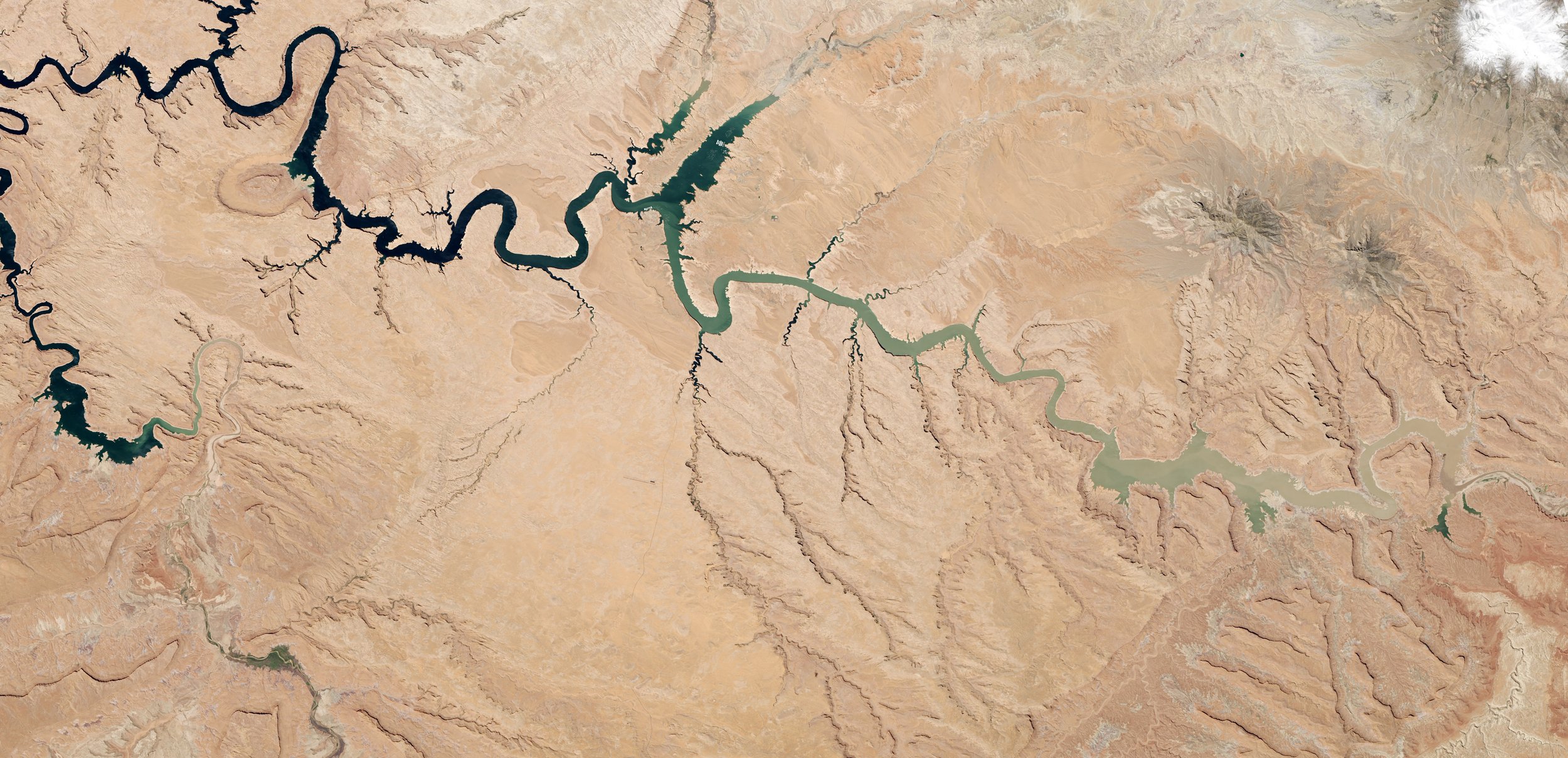Lake Powell, pictured above, is among the reservoirs struggling under the pressure of the drought. Photo courtesy of NASA Earth Observatory via Flickr.
By Catelyn Fitzgerald ’23
Science and Environment Editor
Critically low water levels in the Colorado River did not appear overnight. In fact, the drought crisis in the Western U.S. has been unfolding since the turn of the century, a Washington Post article reported. According to the article, the drought “has been building for decades but has come to a head in recent years” as major reservoirs along the river have dwindled to dangerously low levels. The crisis is spurred on by a combination of climate change and the overallocation of water rights, The Los Angeles Times reported. In order to continue providing water to the 40 million people who depend on the Colorado River, Western states have been forced to cut their water usage and negotiate new water rights allocations, the Washington Post article said.
The Los Angeles Times recently published a series titled “Colorado River in Crisis” which follows the drought and investigates how it will impact the communities that rely on the river. According to a recent article from the series, scientists began expressing concerns in the 1990s over the ability of the river and its reservoirs to support Western states while withstanding climate change. By 2000, the Colorado River watershed had already entered a period of drought which has only worsened over the past two decades.
The Colorado river supplies water to the seven states that border it, the Washington Post article explains. These states are further divided into the “Upper Basin” and “Lower Basin” regions. The “Upper Basin” states include Colorado, New Mexico, Utah and Wyoming. These states get their water by diverting the river thousands of times to redirect it towards different users, the article said. Arizona, California and Nevada comprise the “Lower Basin” states, which rely on large man-made reservoirs — such as Lake Powell and Lake Mead — for their water. Water levels in the two lakes currently stand at a parched one-quarter full, and the river is put under additional stress by “hotter and drier conditions” caused by climate change, the article said. These conditions also diminish the ability of snowmelt to replenish the reservoir, by causing increased evaporation rates and greater absorption of melting snow by soil and plants. The article explains that over the past two decades, water use has exceeded the natural flow of the river. The Los Angeles Times reported that chronic overuse of water resources caused the Colorado River Delta, a region in Mexico where the river flows into the ocean, to have “largely dried up decades ago.”
According to The Washington Post, regulations governing the use of the river’s resources date back to the signing of the 1922 Colorado River Compact, which defined water rights for each of the seven states along the river. Later, regulation written in 1944 granted a share of the river’s resources to Mexico. Water rights for the “Lower basin” states were redefined in the 1963 Supreme Court case Arizona v. California. The new allocations granted California 4.4 million gallons of water each year, the largest share of the seven states, while Arizona received 2.8 million gallons and Nevada 300,000 gallons. In 1968, the construction of canals that brought water from the river through Arizona, called the Central Arizona Project, was completed. In exchange for the increased water access provided by the project, Arizona accepted “junior water rights,” meaning that during drought periods California is entitled to “get its share of water before Arizona,” the article explained.
To remedy the drought before it reaches critical levels, federal managers are asking states to reduce their water consumption by 15 to 30 percent, the Los Angeles Times article reported. So far, six of the seven states have agreed on a proposal for new water allocations that would achieve these reduced usage levels. California remains the lone dissenter, instead electing to submit its own proposal, the article explained. The disagreement between California and the rest of the West hinges on the inclusion of evaporation in the calculation of water losses that would need to be made up for with cuts in water usage. Evaporation is especially significant in the areas of the river that California relies on, meaning that it would have to make larger cuts than the rest of the states.
The looming crisis also forces Western states to balance the water needs of their residents against those of the agricultural industry, an article from The Nature Conservancy explains. According to the article, water from the Colorado River is used to irrigate farmlands both inside and beyond the river basin, totaling an area the size of New Hampshire. Agriculture alone accounts for 80 percent of water usage from the river, the article said. To lessen the pressure of agriculture on the river and free up resources for other uses, The Nature Conservancy has helped farmers adopt creative methods for reducing water usage, from creating a “water bank” to growing crops that thrive in drier conditions.
David Pierce, a climate scientist at the Scripps Institution of Oceanography, described the current water allocation system as “carefully calibrated to just break even in the absence of climate change,” to The Los Angeles Times. The article emphasized that to sustain their populations and industry, Western states will need to agree on a new system that will hold up against the years of drought to come.

